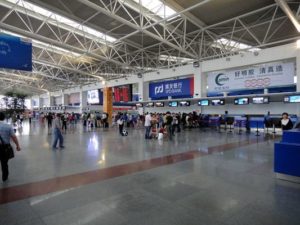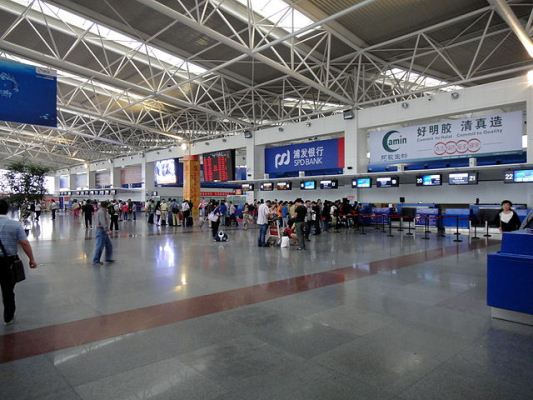 Airports in China contributed 21.6% to the overall increase in global passenger traffic from 2015 to 2016, as aviation continues to shift eastward, according to the latest edition of the World Airport Traffic Report released recently by the Airports Council International (ACI).
Airports in China contributed 21.6% to the overall increase in global passenger traffic from 2015 to 2016, as aviation continues to shift eastward, according to the latest edition of the World Airport Traffic Report released recently by the Airports Council International (ACI).
“The Chinese contribution alone represented an increase of over 100 million passengers in a single year, equivalent to the total annual traffic of Atlanta-Hartsfield (ATL), the world’s busiest airport in the United States,” said Angela Gittens, director general, ACI World.
China is followed by the United States (12.6%) and India (8.8%), said the report, ACI’s flagship publication, representing over 2,400 airports in 170 countries worldwide.
“A similar occurrence is observed with respect to the global share of year over year increases in air cargo volumes (23.5%) and aircraft movements (27.6%) that are handled by Chinese airports,” she said.
The top three contributors to global air cargo volume growth by country share in 2016 are China (23.5%), U.S. (16%), and Qatar (7.2%).
Besides China’s contribution to global growth, several other Asian countries are also home to some of the fastest growing airports in the world as “aviation continues to shift eastward, capitalizing on the demographic dividend,” said the report.
Passenger traffic and air cargo volumes at airports located in emerging and developing Asia have increased 10% and 5.6% on an annualized basis from 2006 to 2016. Last year, airports located in the Association of Southeast Asian Nations-5 (Indonesia, Malaysia, the Philippines, Singapore, and Thailand) saw passenger traffic jump 12.8% and cargo volumes 4.2% as compared to the previous year.
ACI’s Emerging Aviation Market Index, which tracks 19 high-growth emerging markets that have a significant critical mass of passenger and air cargo throughput, accounted for 38.5% and 33.9% of global traffic, respectively, in 2016. On an annualized basis, passenger traffic has grown 9.1% and cargo volumes have leaped 5.2% for the period from 2006 to 2016.
Countries such as India, Indonesia, and Vietnam have achieved double-digit growth on an annualized basis since 2006 and are poised to grow even more in the future as subject to infrastructure capacity considerations.
Similarly, countries like the United Arab Emirates, Qatar, and Turkey, home to global connecting hubs, have experienced exponential growth in under a decade.
With 1.7 billion passengers, BRICS countries (Brazil, Russia, India, China, and South Africa), which represent 21.7% of global passenger traffic, achieved strong growth of 8.2% in passenger traffic. MINT countries (Mexico, Indonesia, Nigeria, and Turkey) also achieved robust traffic growth, with 5.5% increase in passenger traffic in 2016.
“85% of the world resides in emerging markets and developing economies. China and India alone represent over 35% of the world’s population. Growing incomes, a burgeoning middle class and peaking working age populations in some of these markets has translated into the rapid rise in the propensity to travel. Thus, it is no surprise that China, the most populous country on the globe, was the leading contributor to global growth in passenger traffic in 2016,” Gittens said.
Photo: Livewireshock





